There are around 6,000 species of frog across the world, living in a wide variety of habitats.
What is a frog?
At their simplest a frog is a type of tailless amphibian, distinguishing them from newts and salamanders. Frogs and toads sit within the same group, Anura. In general, a frog is described as a toad if it has a warty skin, however, there is no true taxonomic differentiation.
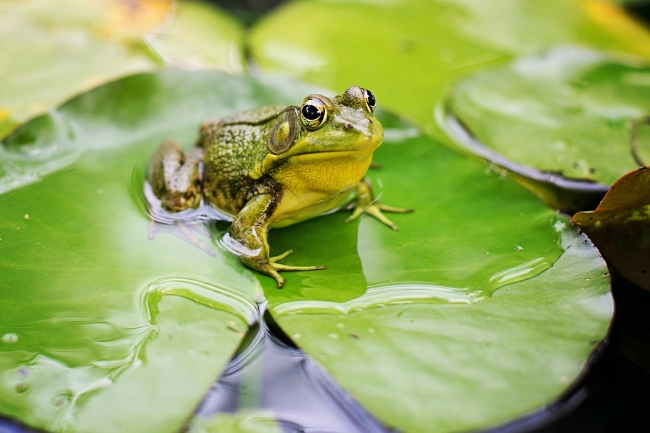
Frogs have a number of characteristics that make them easy to distinguish. Their large protruding eyes and often long, extendible tongue are something they are particularly well-known for.
They have four legs, positioned below the body, with their back legs usually larger and more powerful. Their skin is also distinctive, with glands that release a mucus to help them avoid drying up. Some species also release poisons through their skin.
| Frog Family | Number of Species | Geographic Distribution | Additional Information/Explanation |
|---|---|---|---|
| Ranidae (True Frogs) | 400 | Worldwide | Largest frog family |
| Hylidae (Tree Frogs) | 800 | Americas, Australia | Known for their diverse vocalizations |
| Bufonidae (Toads) | 600 | Worldwide | Secrete toxic substances for defense |
There are around 6,000 species of frogs across the globe, though many scientists believe the figure to be much higher. Because of their incredible adaptability, they have been able to make themselves at home across the globe, in many different habitats, from rainforests to deserts to urban areas.
Because of the risk of dehydration, most tend to be associated with wetlands, such as ponds, lakes, rivers or temporary wetlands. Some are fully aquatic, but most spend part of their time in the water and part on land.
Also read: Which Species of Frogs Eat Fish (Explained)?
Types of frog
As with all animals, frogs are divided up into different families, based on similar features that indicate they are closely related. Of course as DNA technology gets used more and more frequently, some frog species change their allegiance, as we realize some groups are more or less related.
Families can contain a wide range of different species, not all necessarily similar in look, habitat preference or lifecycle. Yet many of these families are named after particularly remarkable features, which are shared by a large number of the species within that group.
Glass frogs

Glass frogs are so called because, in many species, the flesh of their belly is more or less transparent, allowing observers to clearly make out their internal organs, quite a grisly but fascinating sight.
Glass frogs are found in Central and South America, and are tree frogs, meaning they spend most of their time up in the foliage, above the ground.
Most species are a pale green, helping to camouflage them against the leaves they spend much of their time sitting on.
Narrow-mouthed frogs
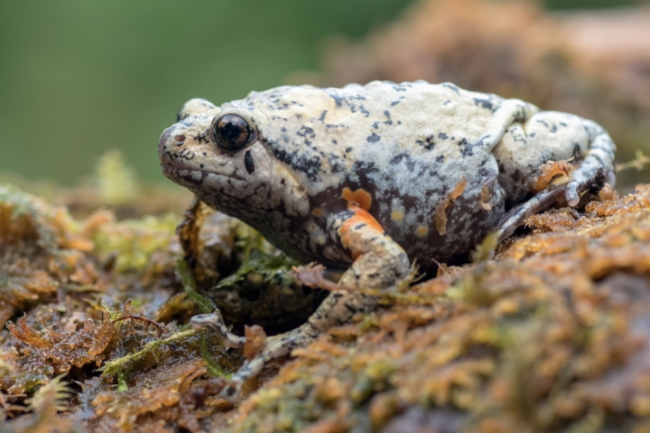
Narrow-mouthed frogs are found across much of the world, including North and South America, Africa and Asia. There are nearly 700 species in this group, with a wide range of habitat preferences and lifestyles.
Their family name stems from the fact that many species have a narrow mouth and broad body, though some have more typical proportions.
Most are not particularly associated with water, largely living in trees or within leaf-litter. They are usually quite small frogs, often less than 2 cm (0,78 inches) in length. Because of their small size and petite mouths, many survive on a diet of ants and termites.
Moss frogs
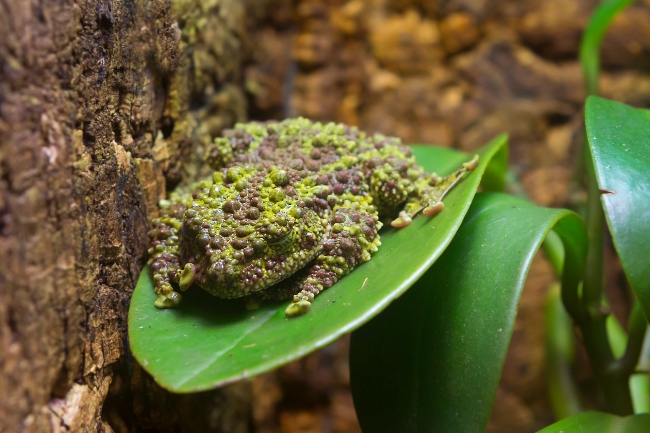
Moss frogs, also known as bush frogs, are found across many countries in Asia, including Japan, Sri Lanka and India, as well as Africa.
They are a largely arboreal group, even going so far as to lay their eggs up in the trees. To do this they use a special foam that hardens in order to protect the eggs. In many species these eggs are laid above water, so the tadpoles can emerge and drop into the water below.
Moss frogs include fascinating flying frogs. These frogs use large webbed feet to glide across open space, usually between trees. This amazing adaptation allows them to avoid heading down to the ground, something that can make them vulnerable to predators.
| Habitat | Number of Threatened Species | Additional Information/Explanation |
|---|---|---|
| Tropical Rainforests | 150 | Rapid deforestation is a significant threat to frog populations in these areas |
| Wetlands | 80 | Loss of wetland habitats and pollution pose risks to many frog species |
| Montane Forests | 60 | Climate change and habitat fragmentation affect frogs in mountainous regions |
Tongueless frogs
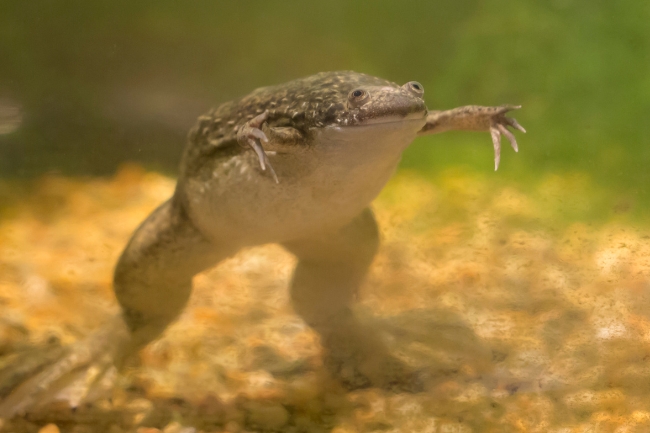
Tongueless frogs or clawed frogs are largely aquatic species, and have adapted to living in such an environment. Unlike many frogs they lack the long extendable tongue for catching prey. Instead, they are ambush predators, and use their claws to grasp and rip apart their prey.
They will eat a wide range of aquatic species, such as fish, other frogs, beetles and worms.
The Mexican burrowing toad
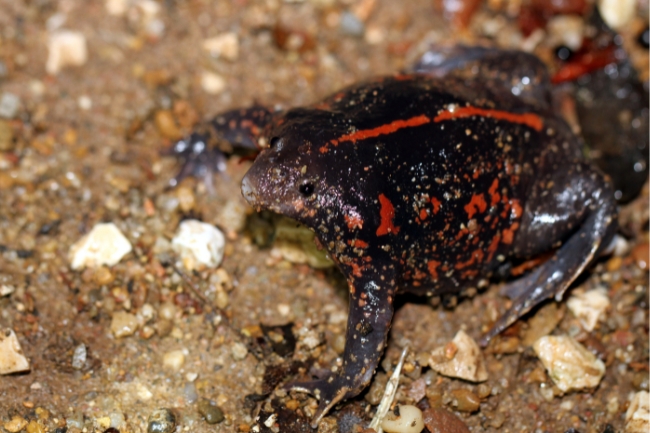
There is only one living species within this group, making it fairly unusual. Although most closely related to the Tongueless frogs, it is still very genetically distinct.
Mexican burrowing toads live in Central and North America, found from Costa Rica up into Texas. They have relatively flat, round bodies, with strong digging claws. Found across forests, savannah and wetlands, they dig burrows into the ground to survive the dry season.
Along with their claws, they have a number of adaptations to help them dig down into the soil, including a short snout-like face and special adaptations to keep their mouth shut as they move through the soil.
Marsupial frogs
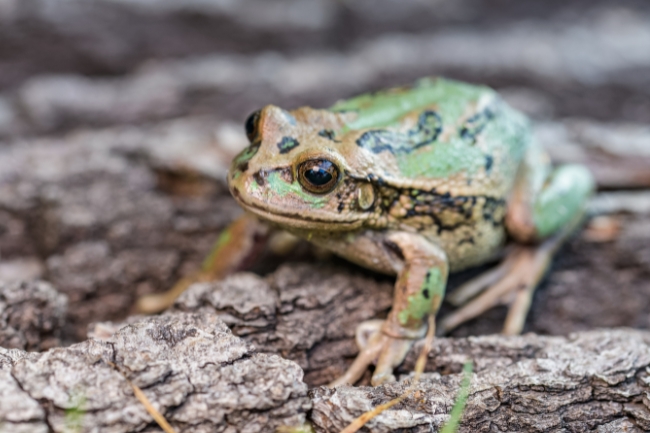
Found across Central and South America these frogs are highly unusual in how they care for their young. Unlike most frogs, which largely abandon their eggs to their fate once laid, marsupial frogs carry them with them.
Female marsupial frogs attach their eggs to their backs, or place them within a special pouch. This amazing behaviour allows this frog to better protect and care for its young during the early stages of its development.
For some marsupial frogs, the eggs they carry will hatch straight into froglets, avoiding an aquatic stage where they are free swimming tadpoles. For others they still deposit the hatching tadpoles into water, and allow them to continue developing there.
Also read: Do Frogs Have Hair? What is Frog ‘Hair’ Exactly
Fantastic frogs
Many people undervalue frogs, not understanding their huge diversity and fascinating lifecycles. Of these species there are a great number that do things we just wouldn’t think frogs were capable of, from flying, to carrying their young around with them, to burrowing deep down into the ground.
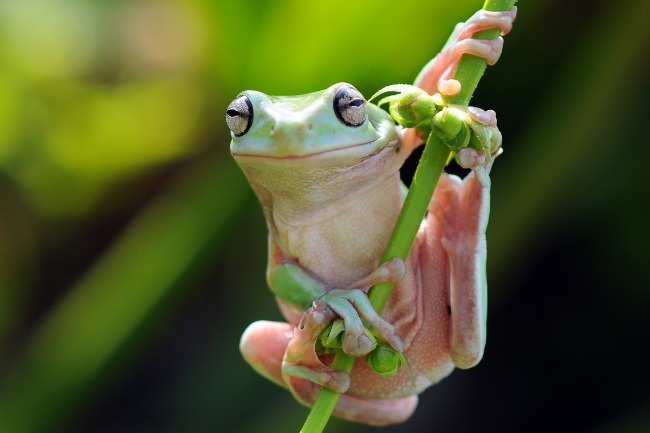
One reason scientists are particularly interested in frogs is that they are often very sensitive to changes in their environment. For this reason many frog species are endangered or rare. As they decline we can read this as the ecosystem itself becoming less stable, and less healthy.
Naturally, we want to keep all our fascinating frogs with us into the future. In order to do this we have to be kinder to the place they live. If we can protect the ecosystem as a whole, in the long-term, we’ll also protect the frogs.

